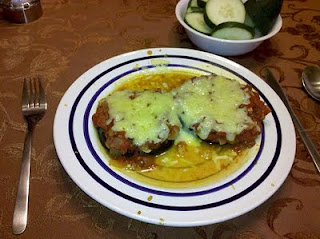Right now at the farmers market you’ll find a lot of what I like to call “summer leftovers.” These are vegetables that bloom and are technically in season in the summer but, if stored in a cool dry place, will last until the fall. This includes zucchinis, summer squash, egg plant, and even cucumbers and some peppers. The good news is that, since these last outside the fridge for so long, a lot of the farmers stockpile them to have something to sell between seasons. The bad news is that you’ve probably been eating the same vegetables for a couple months and are ready for a change.
To that end, NPR published an excellent collection of quick bread recipes, proposing them as “solutions to summer’s bounty”. All the recipes are incredibly easy to make and, even better, freeze well to eat later. They are called quick breads because they don’t use yeast, just the natural sugars in the vegetables along with some basic ingredients everyone has lying around their house.
This is the recipe I used with some green and yellow zucchini I got from Houston Farms. The eggs are, as always, from Windy Hill Farm and I topped off the finished product with butter from Simply Local.
Zucchini Quick Bread (v, LPO)
3 1/2 cups all-purpose flour, plus extra for dusting
2 teaspoons baking powder
1/2 teaspoon baking soda
1 teaspoon salt
1 teaspoon ground cinnamon
1/2 teaspoon freshly grated nutmeg
1/4 teaspoon ground cloves
2 1/4 cups coarsely grated, unpeeled zucchini
1 cup sugar
4 large eggs, lightly beaten
1/2 cup vegetable oil
- Preheat the oven to 350 degrees. Grease and flour two 8 1/2-inch loaf pans.
- Sift the flour, baking powder, baking soda, salt, cinnamon, nutmeg and cloves into a bowl, and set aside.
- Combine the zucchini, sugar, eggs, and oil in a large bowl, and mix by hand until evenly blended.
- Add the sifted dry ingredients to the zucchini mixture. Stir by hand just until the batter is evenly moistened and blended.
- Divide the batter between the prepared loaf pans and bake until edges are brown and pull away from the pan, about 50 minutes.


